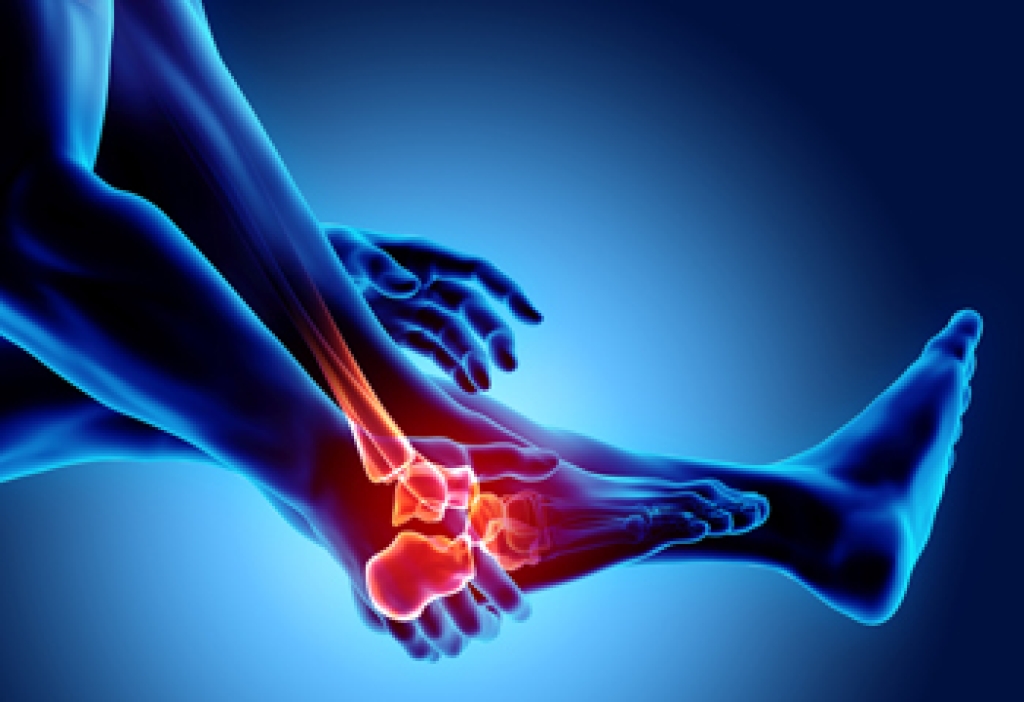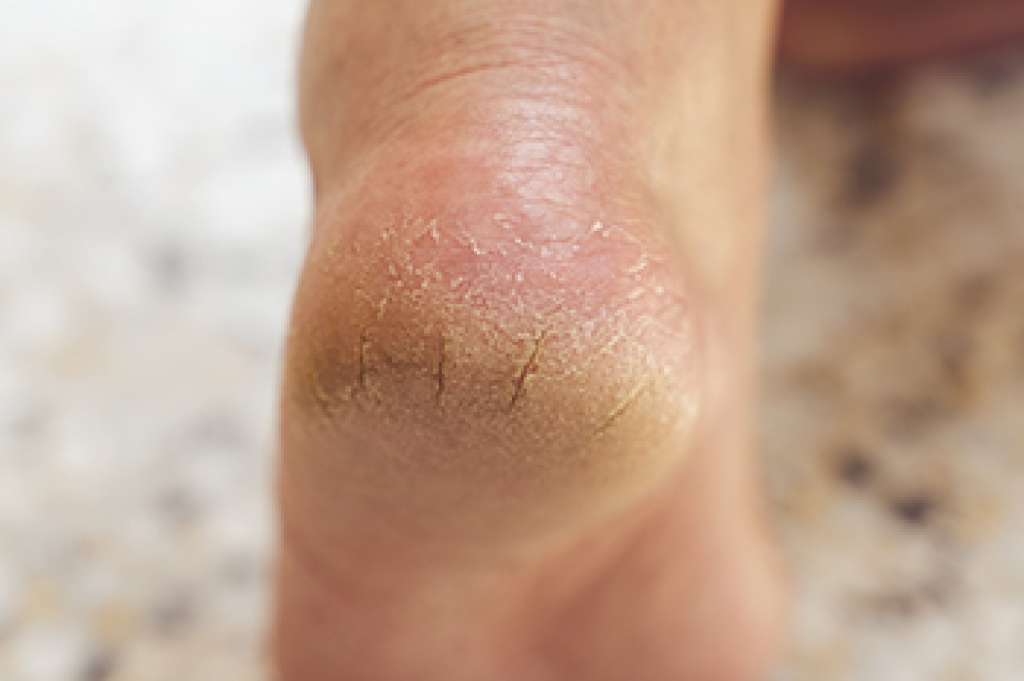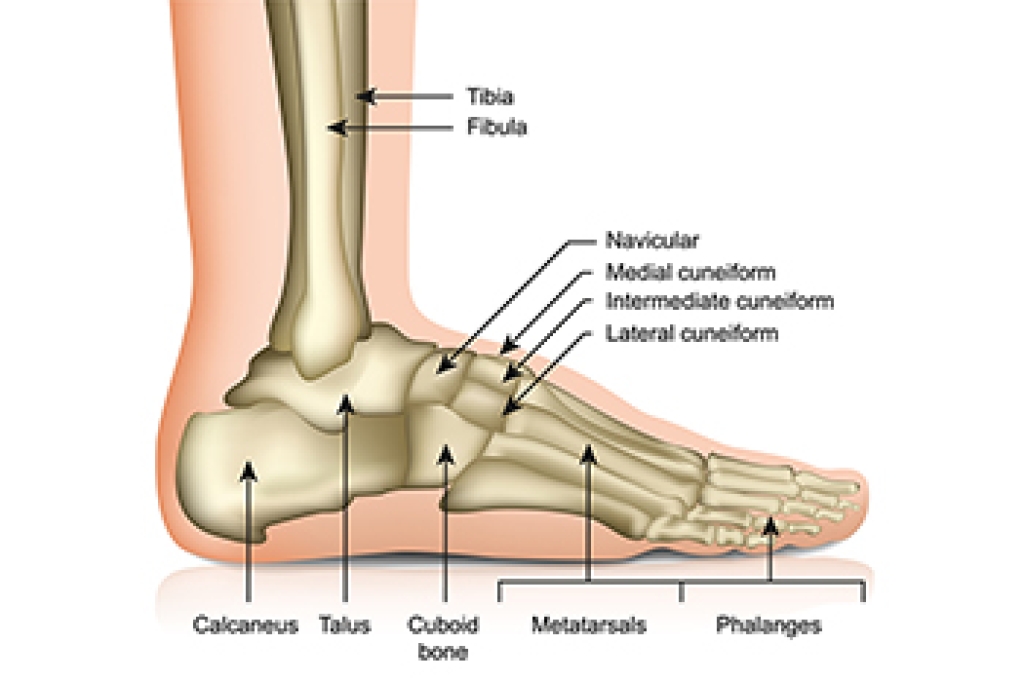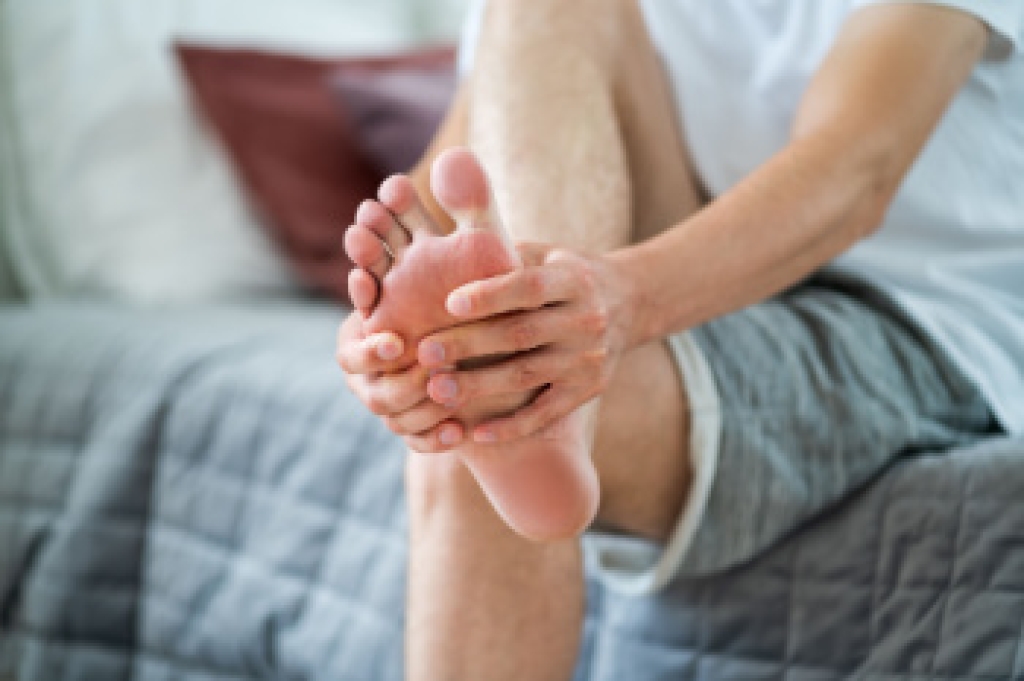Blog
Understanding Osteoarthritis of the Ankle

Ankle osteoarthritis develops when the joint wears down, often years after an earlier ankle injury. Damage from a past sprain or fracture can change how the ankle moves and put more pressure on the joint’s thin layer of cartilage. This can lead to swelling, stiffness, and pain that sometimes spreads into the middle or back of the foot. People may also notice grinding or popping when they point or flex their toes. In addition, the ankle can feel less flexible when walking, especially when wearing flip-flops. Extra body weight and repeated hard impact on the feet put more strain on the ankle and increase discomfort. A podiatrist can examine the ankle joint and order imaging to check the cartilage and ligaments to determine a course of treatment. Options include bracing and inserts for support or surgery when the damage is severe. If you have symptoms of osteoarthritis in the ankles, it is suggested that you make an appointment with a podiatrist for a diagnosis and treatment.
Arthritis can be a difficult condition to live with. If you are seeking treatment, contact Shalonda Davidson, DPM from Instride Carolina Foot Care. Our doctor can provide the care you need to keep you pain-free and on your feet.
Arthritic Foot Care
Arthritis is a joint disorder that involves the inflammation of different joints in your body, such as those in your feet. Arthritis is often caused by a degenerative joint disease and causes mild to severe pain in all affected areas. In addition to this, swelling and stiffness in the affected joints can also be a common symptom of arthritis.
In many cases, wearing ill-fitting shoes can worsen the effects and pain of arthritis. Wearing shoes that have a lower heel and extra room can help your feet feel more comfortable. In cases of rheumatoid arthritis, the arch in your foot may become problematic. Buying shoes with proper arch support that contour to your feet can help immensely.
Alleviating Arthritic Pain
- Exercises that stretch the foot can prevent further pain and injury and increase mobility
- Most of the pain can be alleviated with anti-inflammatory drugs, heat, and topical medications
- Massages can help temporarily alleviate pain.
It is best to see your doctor for the treatment that is right for your needs and symptoms. Conditions vary, and a podiatrist can help you determine the right method of care for your feet.
If you have any questions please feel free to contact our office located in Statesville, NC . We offer the newest diagnostic tools and technology to treat your foot and ankle needs.
Healing Cracked Heels and Fissures for Healthy Feet

Cracked heels, also known as heel fissures, occur when the skin on the heels becomes dry, thickened, and splits, often caused by obesity, excessive pressure, or underlying conditions like eczema. The heels may look rough, dry, and sometimes develop deep cracks, or fissures. In severe cases, bleeding or infection can set in. Many individuals experience pain, burning, or itching, especially when walking or standing for extended periods. In some cases, heel fissures can worsen during dry seasons or with frequent exposure to open footwear, increasing the risk of discomfort and infection. A podiatrist can assess the severity of the heel fissures, examine the skin condition, and recommend treatments. Included are professional debridement, moisturizing therapies, protective dressings, and guidance on footwear or pressure relief techniques. Early intervention promotes healing, reduces pain, and prevents complications. If you notice persistent dryness, cracking, or discomfort in your heels, it is suggested that you make an appointment with a podiatrist.
If the skin on your feet starts to crack, you may want to see a podiatrist to find treatment. If you have any concerns, contact Shalonda Davidson, DPM from Instride Carolina Foot Care. Our doctor can provide the care you need to keep you pain-free and on your feet.
Cracked Heels
It is important to moisturize your cracked heels in order to prevent pain, bleeding, and infection. The reason cracked heels form is because the skin on the foot is too dry to support the immense pressure placed on them. When the foot expands, the dry skin on the foot begins to split.
Ways to Help Heal Them
- Invest in a good foot cream
- Try Using Petroleum Jelly
- Ease up on Soaps
- Drink Plenty of Water
Ways to Prevent Cracked Heels
- Moisturize After Showering
- Skip a Shower
- Keep Shower Water Lukewarm
- Don’t Scrub Your Feet
If you are unsure how to proceed in treating cracked heels, seek guidance from a podiatrist. Your doctor will help you with any questions or information you may need.
If you have any questions, please feel free to contact our office located in Statesville, NC . We offer the newest diagnostic and treatment technologies for all your foot care needs.
Mid-Foot Stress Fractures in Runners

Mid-foot stress fractures in runners often involve the navicular bone, which lies between the ankle and the front of the foot. Repetitive impact from running can place excessive pressure on this bone. This often happens during foot strike, when the navicular becomes trapped between the talus and the cuneiform bones. The resulting pressure can eventually cause a small crack to form, which leads to pain on the top or inner side of the mid-foot. Because these mid-foot stress fractures are difficult to detect on standard X-rays, advanced imaging, such as a CT scan or MRI, is often needed to confirm the diagnosis. Without proper care, the fracture can become worse or heal improperly, resulting in long-term pain or weakness. A podiatrist can assess the injury, ensure accurate imaging, and recommend appropriate treatment or surgery if needed. If you have mid-foot pain while running, it is suggested that you make an appointment with a podiatrist for a diagnosis and suggested treatment.
Stress fractures occur when there is a tiny crack within a bone. To learn more, contact Shalonda Davidson, DPM from Instride Carolina Foot Care. Our doctor can provide the care you need to keep you pain free and on your feet.
How Are They Caused?
Stress fractures are the result of repetitive force being placed on the bone. Since the lower leg and feet often carry most of the body’s weight, stress fractures are likely to occur in these areas. If you rush into a new exercise, you are more likely to develop a stress fracture since you are starting too much, too soon. Pain resulting from stress fractures may go unnoticed at first, however it may start to worsen over time.
Risk Factors
- Gender – They are more commonly found in women compared to men.
- Foot Problems – People with unusual arches in their feet are more likely to develop stress fractures.
- Certain Sports – Dancers, gymnasts, tennis players, runners, and basketball players are more likely to develop stress fractures.
- Lack of Nutrients – A lack of vitamin D and calcium may weaken the bones and make you more prone to stress fractures
- Weak Bones – Osteoporosis can weaken the bones therefore resulting in stress fractures
Stress fractures do not always heal properly, so it is important that you seek help from a podiatrist if you suspect you may have one. Ignoring your stress fracture may cause it to worsen, and you may develop chronic pain as well as additional fractures.
If you have any questions please contact our office located in Statesville, NC . We offer the newest diagnostic and treatment technologies for all your foot and ankle needs.
All About Gout and Your Feet

Gout is a painful type of arthritis that often affects the big toe, but can also impact other joints in the feet and ankles. It is more likely to occur in men over 40, postmenopausal women, and individuals with a diet high in red meat, seafood, or alcohol. Gout develops when uric acid builds up in the blood and forms sharp crystals in the joints. These crystals cause sudden episodes of severe pain, redness, swelling, and warmth, often waking people at night. The affected area may appear shiny, inflamed, and extremely tender to the touch. A podiatrist can help diagnose gout through physical examination, imaging, and laboratory testing to measure uric acid levels. Treatment may include medication to reduce inflammation and pain, dietary changes, and long-term management to prevent future flare-ups. If you experience symptoms of gout, it is suggested that you make an appointment with a podiatrist to receive proper care and relief.
Gout is a foot condition that requires certain treatment and care. If you are seeking treatment, contact Shalonda Davidson, DPM from Instride Carolina Foot Care. Our doctor will treat your foot and ankle needs.
What Is Gout?
Gout is a type of arthritis caused by a buildup of uric acid in the bloodstream. It often develops in the foot, especially the big toe area, although it can manifest in other parts of the body as well. Gout can make walking and standing very painful and is especially common in diabetics and the obese.
People typically get gout because of a poor diet. Genetic predisposition is also a factor. The children of parents who have had gout frequently have a chance of developing it themselves.
Gout can easily be identified by redness and inflammation of the big toe and the surrounding areas of the foot. Other symptoms include extreme fatigue, joint pain, and running high fevers. Sometimes corticosteroid drugs can be prescribed to treat gout, but the best way to combat this disease is to get more exercise and eat a better diet.
If you have any questions, please feel free to contact our office located in Statesville, NC . We offer the newest diagnostic and treatment technologies for all your foot care needs.

